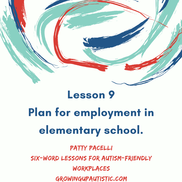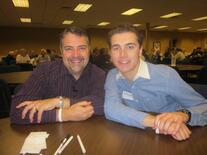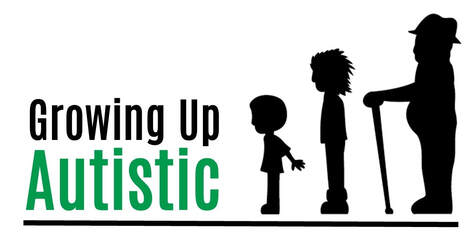 Photo by AdinaVoicu via Pixabay Photo by AdinaVoicu via Pixabay
Guest post by Paul Denikin of DadKnowsDIY.
Having a child on the autism spectrum means doing most things a bit differently. It can be difficult to know how to navigate around certain events, especially when they require so much planning to keep your child safe and happy, yet it’s imperative to be prepared in order to do just that.
0 Comments
By Trevor Pacelli
I have never respected Sesame Street as much as I do now that they've added Julia to the cast. Over the years of watching the show in my early days and laughing at the skits as an adult while pulling them up on YouTube, I saw it as just a really good children's program that was popular enough to last nearly fifty years. But now, after seeing all the hard work and research they put into creating their first autistic muppet, as explained in the above video from a 60 Minutes feature, I can see that they are so much more than just a really good children's program.  By Patty Pacelli For children on the autism spectrum, start career planning as soon as your child starts developing interests. The elementary school years are perfect for this, but at least by age 14. Taking note of their interests, especially their passions, can help them pursue and cultivate them. If they talk about dreams that seem unrealistic, encourage them anyway. You never know what they will be capable of as they grow and develop. Take their interests a step further by finding household tasks or volunteer work that will help them explore and develop their passions while learning good basic work skills and lead to independence and better employment. For more about preparing your child with autism for the workplace, check out Six-Word Lessons for Autism-Friendly Workplaces, in paperback and e-book.
By Trevor Pacelli
Over the past six months, I have spoken at two different elementary schools in the East side of Seattle autism. The talk relates various Disney movies to what it’s like to live on the autism spectrum. I covered all the latest releases that today’s generation of kids most relate to: Tangled, Wreck-It Ralph, Frozen, Big Hero 6, Zootopia, and Moana. My feedback on each talk was greatly positive, both from the staff and from the K-5 kids. I currently have a third talk booked for October, with a trailer to provide more information about future talks at other schools. 
By Trevor Pacelli
Everybody is required to learn about history as they go through elementary school, middle school, and high school. They learn about the history of various countries around the world and why it is relevant to us today. They also learn about America's history and all of the important events and people that formed our country. Many of many of the people I grew up with seemed to grasp and understand the subjects we were learning, including the political issues concerning the government today. But as for me, I never paid any attention to history subjects, and today I can hardly recall anything I learned. I do remember my U.S. history classes talking about the Mayflower, the Westward movement, the signing of the Declaration of Independence, America's presidents, World War I, World War II, the Cold War, the Vietnam War, and many other subjects; but the details are as foggy to me now as they were at the time I was taught them.  By Lonnie Pacelli This article on Trevor's dad's website chronicles our family's experience deciding to homeschool Trevor as a couple when Trevor was in 7th and 8th grade. It was a major career decision that paid great dividends for Trevor's education and future. Read the article here. |
Inspiration for Life with AutismThis blog has a variety of articles about people living life with autism, and topics and ideas that can help in the journey. Guest bloggers are welcome. Inspired by Trevor, a young adult film critic, photographer and college graduate on the autism spectrum. Categories
All
Archives
April 2024
|
Proudly powered by Weebly

 RSS Feed
RSS Feed